# PS-SPS Users Meeting for Week 20 held on 15th May 2025
Coordinator for this week : M. Jäkel
Coordinator for next week : P. Martinengo
:::success
* Current **[PS / SPS User schedule v1.1.1](https://ps-sps-coordination.web.cern.ch/ps-sps-coordination/)**
(Version 1.1.2 for H2)
* **Injector schedule** (v1.1) for 2025 is available here: https://edms.cern.ch/document/3057281/latest
:::
:::warning
**EuroLabs :** Application are open. Please submit your requests.
:::
## News from the PS & SPS Physics Coordinator
M.R. Jäkel, P. Martinengo
:::info
**Proton Run 2025**
* Physics Start p+ EA & nTOF Wednesday 19.03.2025
* Physics start Isolde Friday 28.03.2025
* SPS NA Physics start EHN1 Monday 14.4.2025
* SPS NA Other Physics start Thursday 17.4.2025
* LHC start delayed by ≈ 1 week
:::
:::success
**Newly vacant beam slots :**
* SPS H4 - W40 (beam restrictions apply)
Please contact [SPS.Physics.Coordinator@cern.ch](mailto:SPS.Physics.Coordinator@cern.ch) if you want to apply for any of theses slots.
:::
Reminder: Beam time exceeding the limits of 2 weeks PS beam time and 1 week SPS beam time per year need the approval of one of these CERN committees: SPSC, LHCC, DRDC, INTC, RB or IEFC. Consider joining a DRD collaboration, if you require more beam time.
**Target intensities:**
See below or via [ASM](https://asm.cern.ch/experimental-area/experiments) (accessible from within the CERN network).

### News from the Facilities Operations Meeting (FOM)
Pressure rise in T2 TBID observed after increase in intensity sent to T2.
* TE/VSC has rechecked the BIS interlock directly connected to pump for 1e-6 mbar. It has been agreed among all experts to reestablish the 100 units on T2 and monitor the behaviour of the device.
**Upcoming SPS MDs next weeks :**
https://be-dep-ea.web.cern.ch/content/md-planning-north-area
Dedicated SPS MDs - if not anounced differently - are taking place from 8:00 to 18:00
---
## PS Machine Report (Alexandre Lasheen)
- Good availability from Thu-Thu 09:00 of 97.3%
- Main downtime due to beam stop for access Monday 15:30-17:30 (cavity gap relay and vacuum equipment in F62).
- Optimization of the AWAKE bunch parameters from the PSB-PS, to find configuration that is more resilient to variations in bunch intensity from 5e10-3e11 and keep more constant bunch parameters across the complex.
- Missed beam stop for EAST_T8 during Tue-Wed night shift, delaying the access. Apologies from the OP crew, action taken to avoid repeating the issue.
- Ongoing tests of the automatic sequence editor, please report to operators in case of important issues with the beam scheduling.
## SPS Machine Report (Giulia Papotti)
- AFT SPS availability (past 7 days): 92.5%
- main downtime: no beam from PS (did SPS interventions in parallel)
- LHC, NA, Awake physics operation
- T4 adjusted to 36 units
- TT20 optics fixed (typo corrected)
- AWK: tags created for different intensities at PS/PSB
- accesses for HRM in the shadow
- MDs: long parallel MD ongoing, short parallel Friday
- next week Wednesday: dedicated MD (only partly without extraction)
- next week Thursday: long parallel MD
- BPT statistics being refactored by Kevin
> 
> 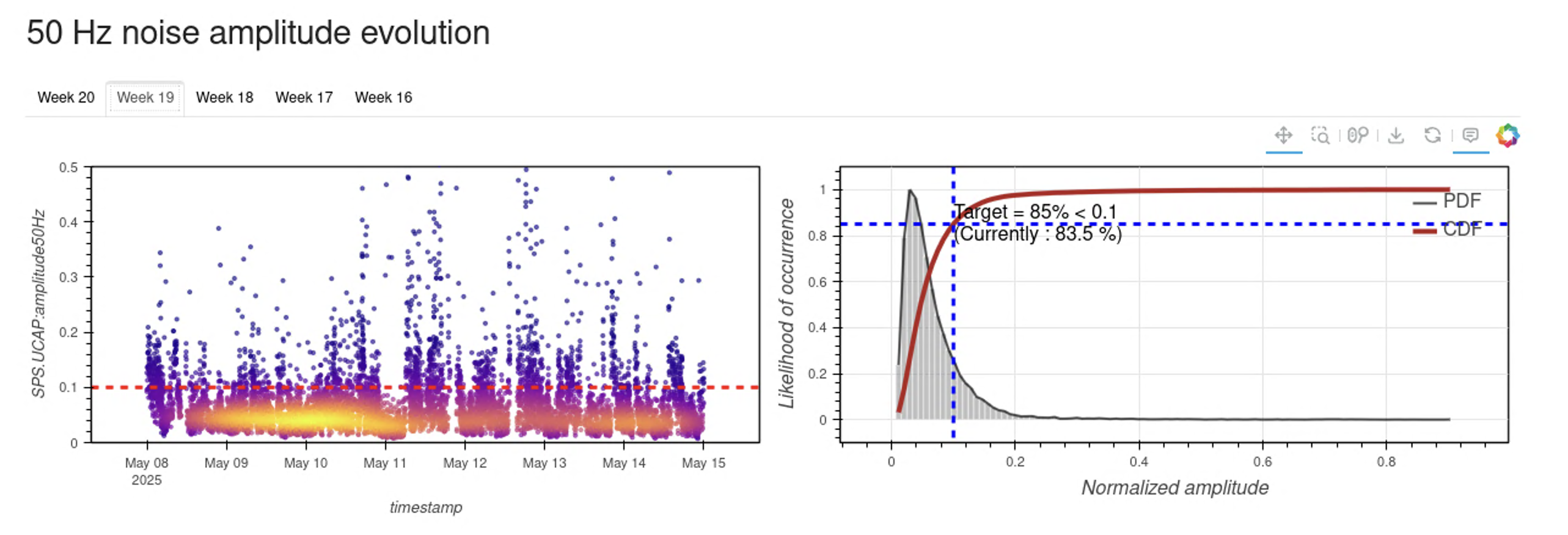
## Safety (James Devine)
- Helmets! When you are in your zone, or going to your zone from the control room, you must wear your helmet.
- Forthcoming power cut request, for the 23rd June there will be a request that will likely affect the North Area, ECN3, EHN2, EHN1. This date has been chosen by the EATM, but will need to be approved by FOM and TIOC. A formal announcement will come through once it has been finalised. The power cut is being requested for the AUG system before the AMBER experiment starts hydrogen TPC operation.
- ISIEC form link [can be found here](https://ep-th-safety.web.cern.ch/isiec-safety-clearance), if it doesn't work please log in and then go to the link again.
## TT42 Main: n_TOF (Alice Manna, Paolo M Milazzo)
Smooth data taking on:
• EAR1: Study of the 87Sr(n, g). Array of a C6D6 liquid scintillators.
• EAR2: 92,100Mo(n,g): Segmented total energy detectors, liquid scintillators.
• NEAR: Study of radiation hardness for a diamond detector
A long list of intervention are planned for the next week; we expect a long stop (28 h) from 9.00 of 20.05 up to 13.00 of 21.05.
- Installation of transmission station, just before the last collimator close to EAR1
- Change of collimator in EAR2, from the capture to the fission one (larger)
- Unmount of detectors devoted to study radiation hardness and restart of activation activities.
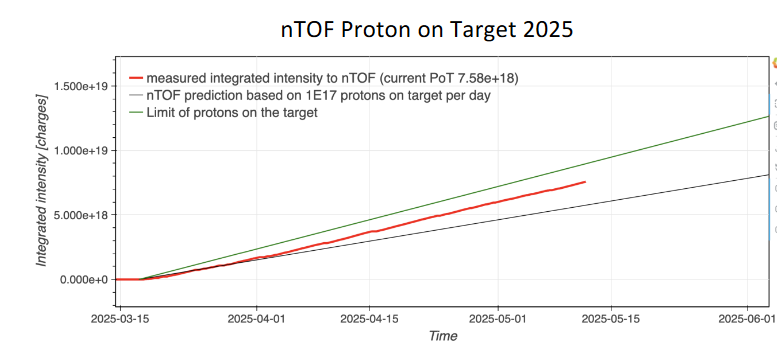
From https://bpt.web.cern.ch/ps/TOF/2025/
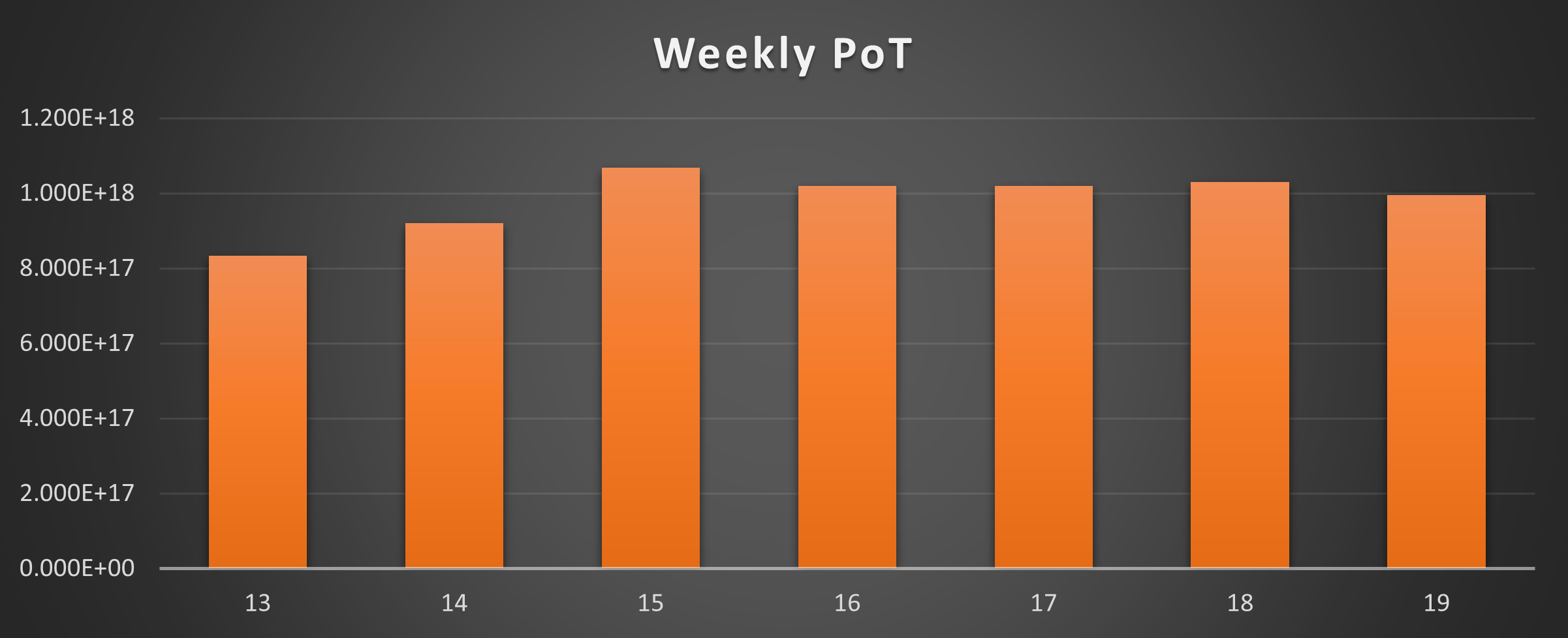
## East Area Beam Status (Laurie Nevay)
On call phone number: **67500**.
T9/T10: Good operation. No issues to report.
T11: No user.
For WCTE discussion: Intensity on East North target and intensity in T10 (muon beam only this week).
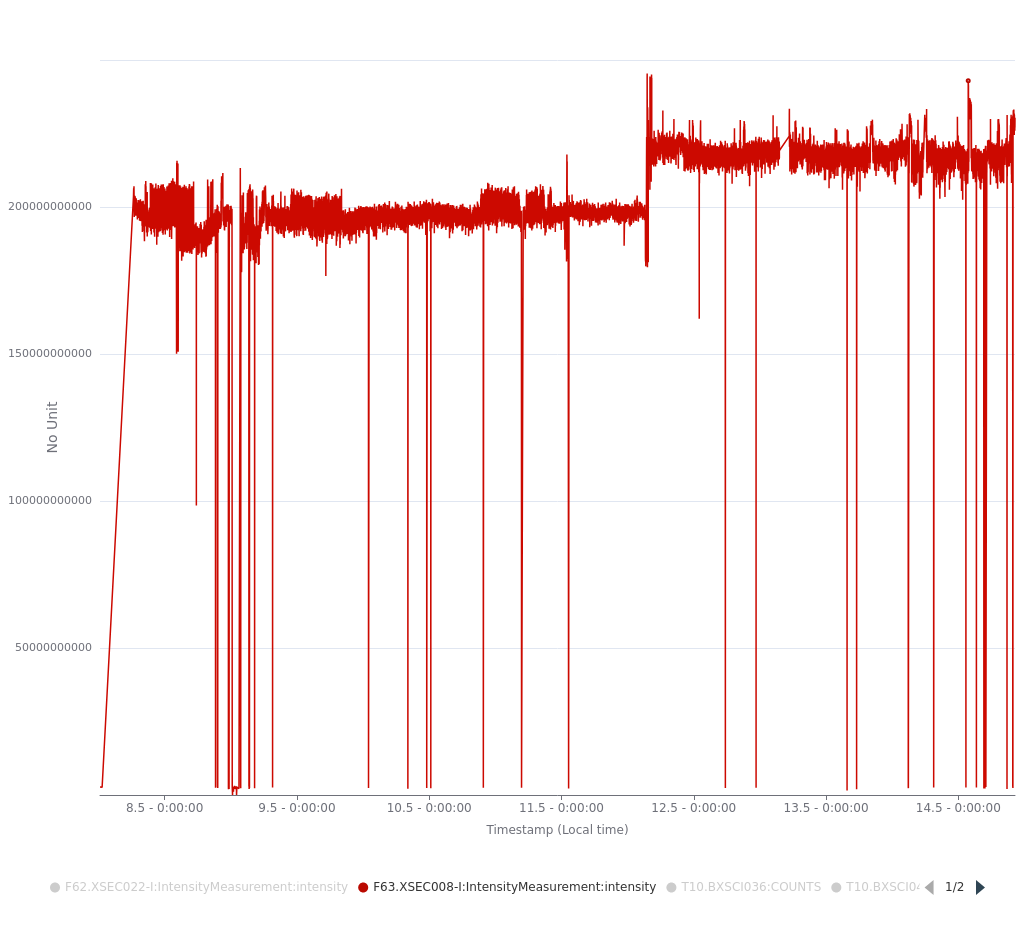
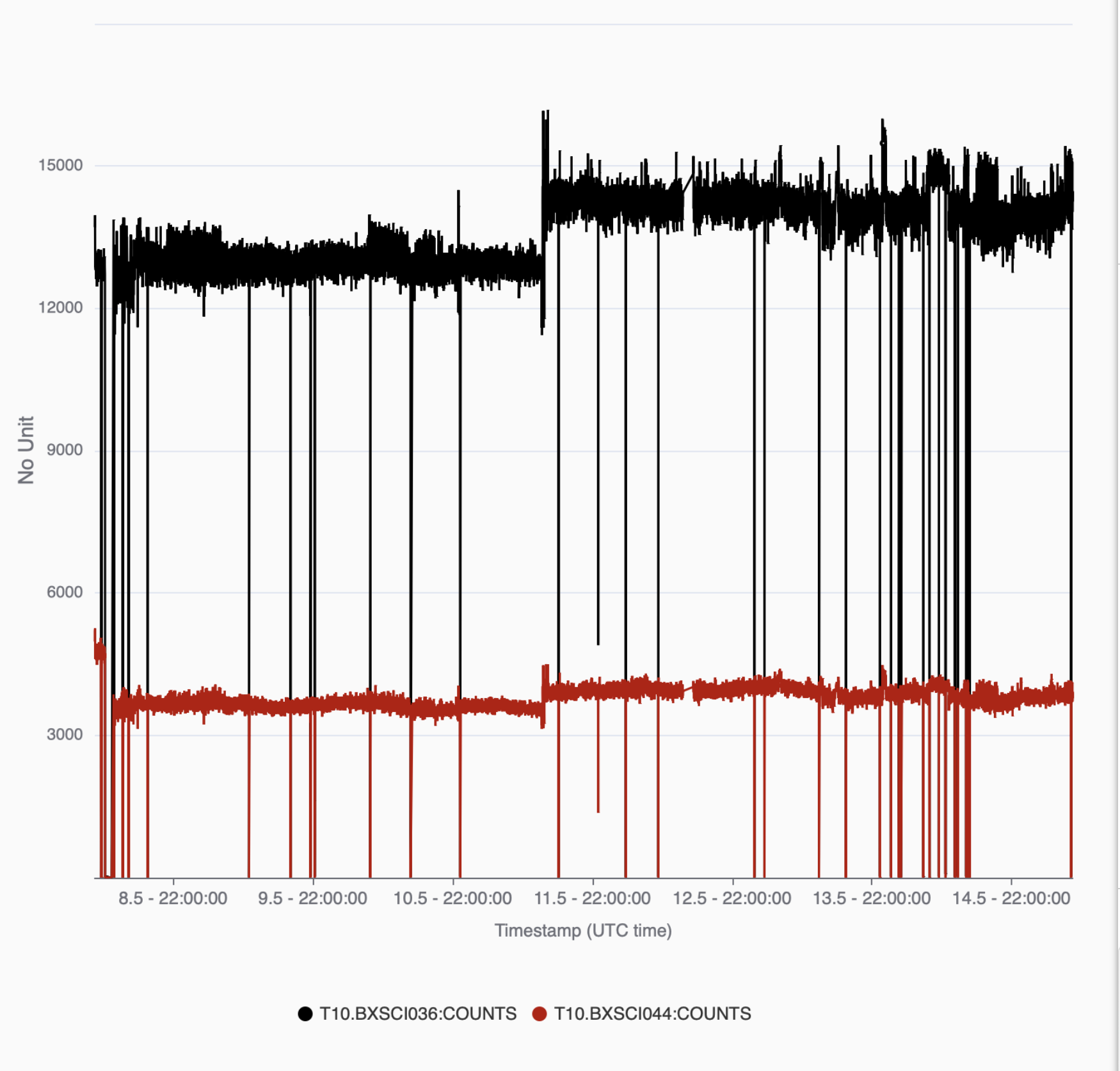
## East Area Users Tour de Table
### T8 Main: IRRAD_CHARM (F. Ravotti / S. Fiore / G. Pezzullo)
Very good week - intensity delivered to T8 >2.6E16 p/w. The TID in CHARM reference position exceeded 500 Gy (see below). Beam centering continue to be extremely good >98% of centred spills on both axes.
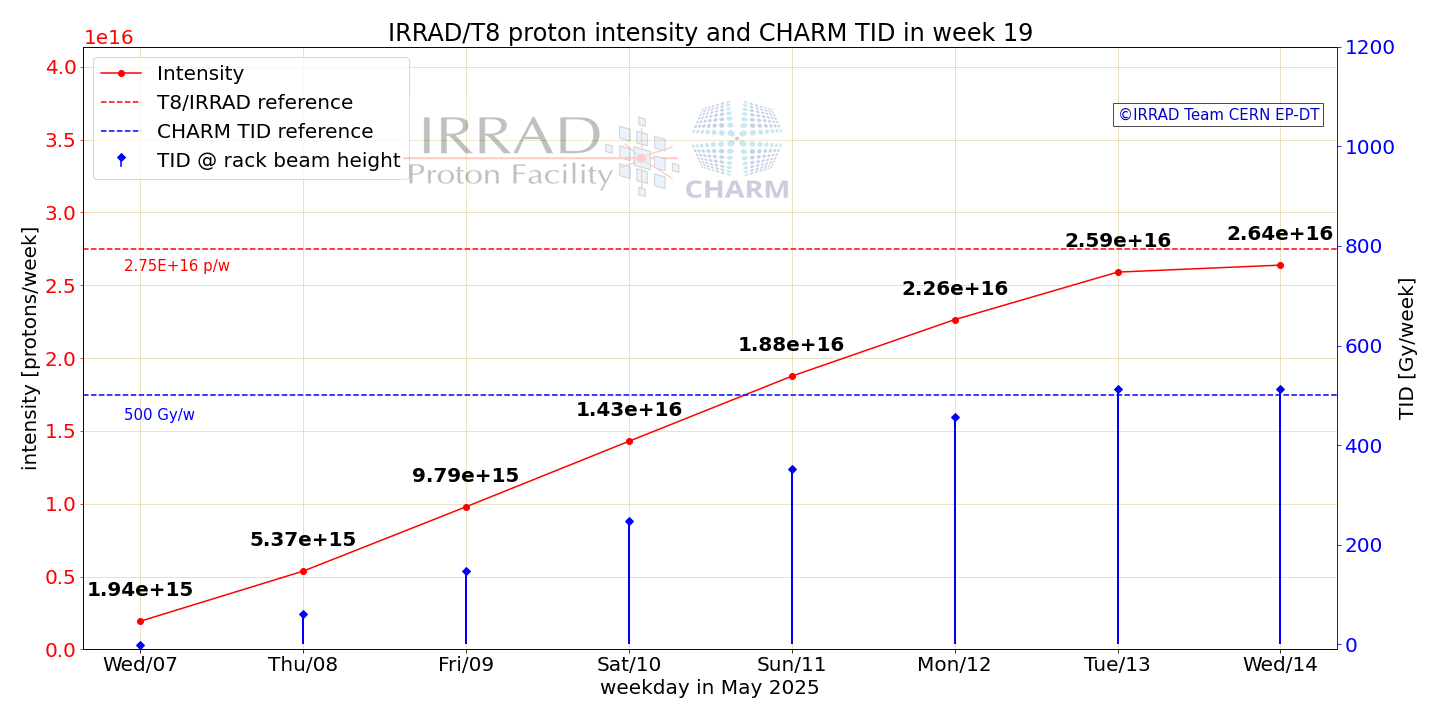
We had some issues on the access on Wednesday. Our planning for the user access needed to change because the beam was not turned off at the requested time over night. The beam went off ~7am after checking in the morning and calling the CCC. Also the area was not moved to "Access Mode" immediately and this further delayed the access (to CHARM only) of other ~30min. The activities in IRRAD needed to be moved to the afternoon because of not enough cool-down time on the irradiated material. Beam operation restarted only after 16:30.
It seems that the regular e-mail message detailing the T8 planning, circulated on Tuesday at around 7.30pm, went unnoticed this week.
In IRRAD, samples exchange for the EP-DRD3 and LHCb, we installed a new setup for irradiation in inert-gas atmosphere (N2) for TE-MSC.
In CHARM removed setups by BE-CEM and EP-DT, new setups by ATLAS-CAEN.
From the beginning of the year:
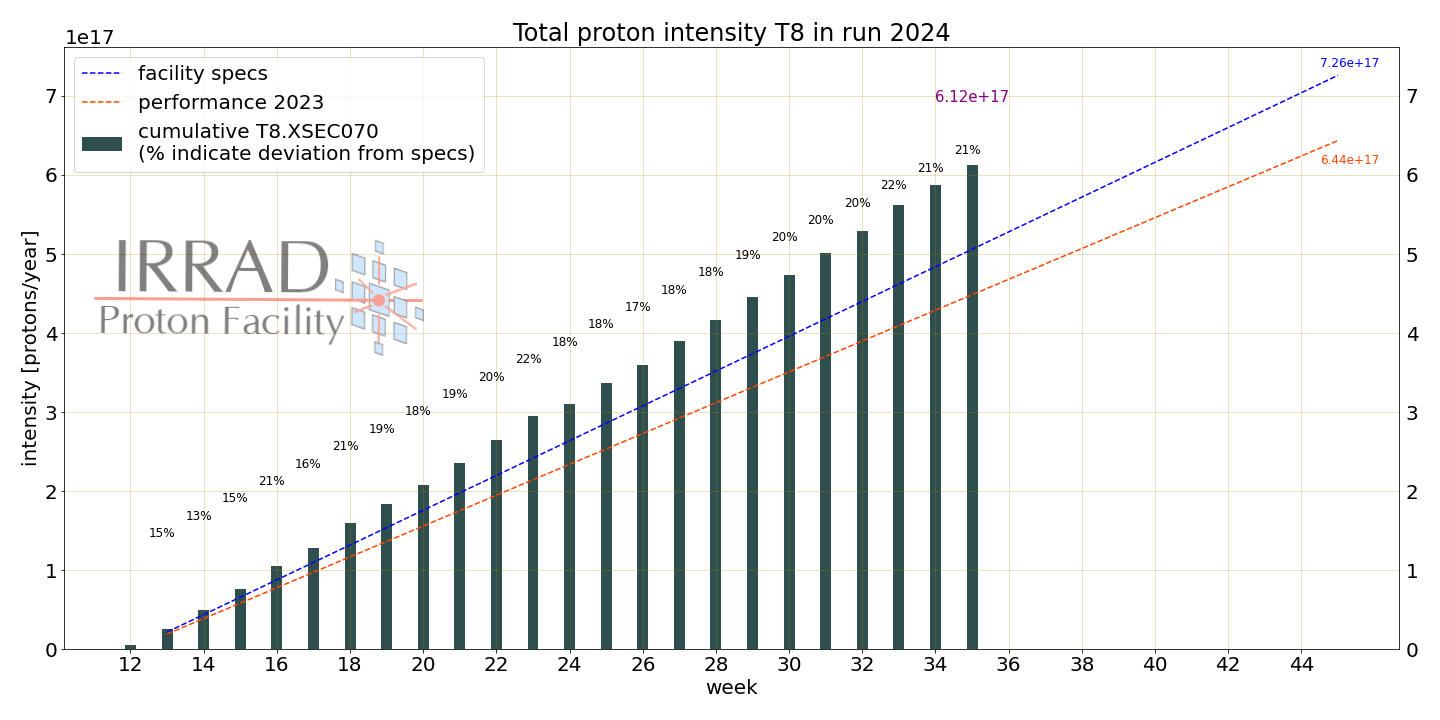
### T9 Main: WCTE (Xiaoyue Li)
* Currently running in hardware trigger mode
* Finished data taking for pion interactions, PID and energy scale studies
* ~250 MeV/c to ~500 MeV/c pion and muon, positive and negative polarities
* Also finished data taking for tagged gamma and 1.1-1.5 GeV/c proton
* Remaining data to be taken in pure water mode for the rest of this week include
* 0.8-1.0 GeV/c electron/positron hard scattering data
* ~200 MeV/c low momentum muon PID study
* 1.1 GeV/c K+ study
* Water system passed pressure test on Monday --> ready for Gadolinium (Gd) loading, pending HSE approval. Expect to start Gd loading early next week
* We see a lot of particles from T10 in WCTE, and sometimes the rate seems to spike, which can crash the DAQ. T10 users confirmed that it was not due to their action. What could cause spikes in beam intensity like this?
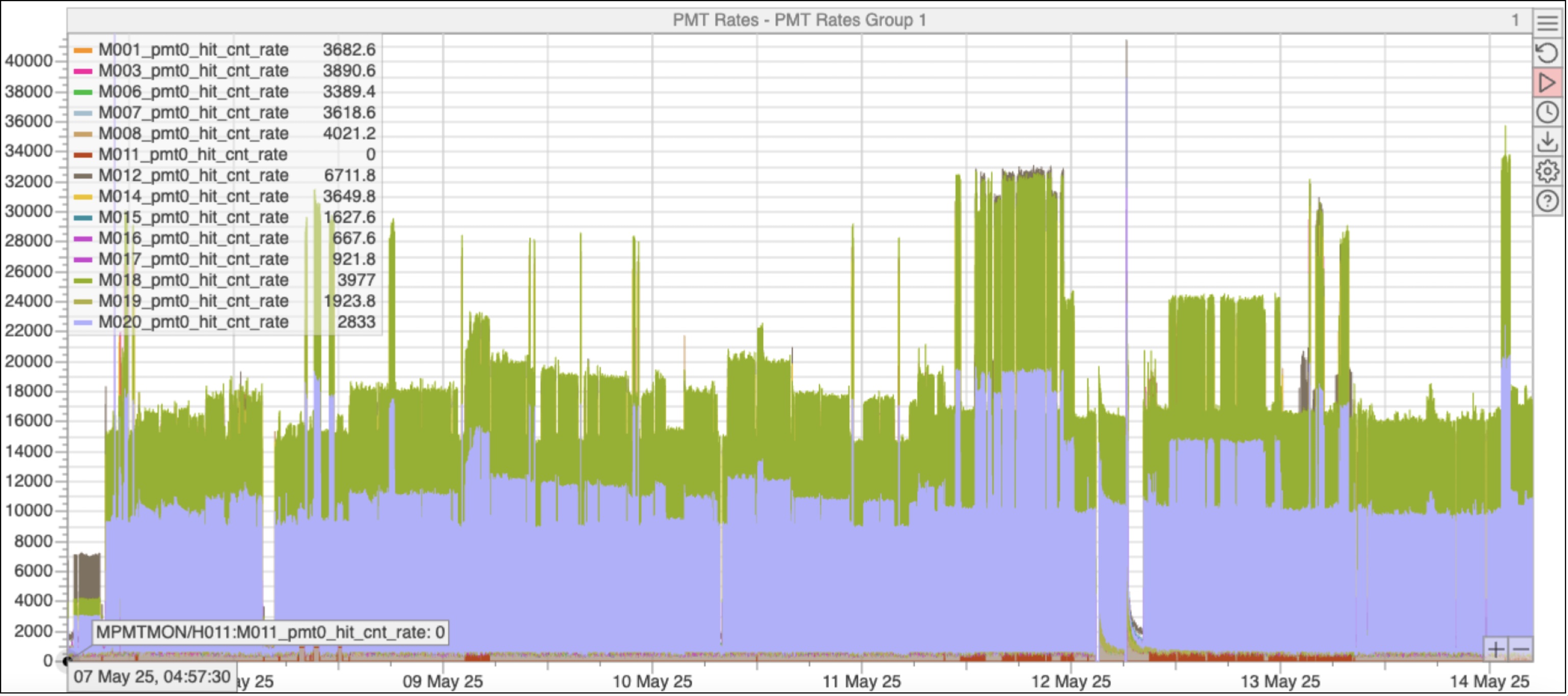
### T10 Main: SHIP LS-SBT (Annika Hollnagel)
- Completed the Liquid Scintillator scavenger hunt and recovered the IBC at Montagnat with the help of Sebastian Ritter and the SHiP CAL truck!
- Successfully filled our two LS-SBT prototypes, with the IBC & LHS now sitting just in front of T10 instead of in the area.
| 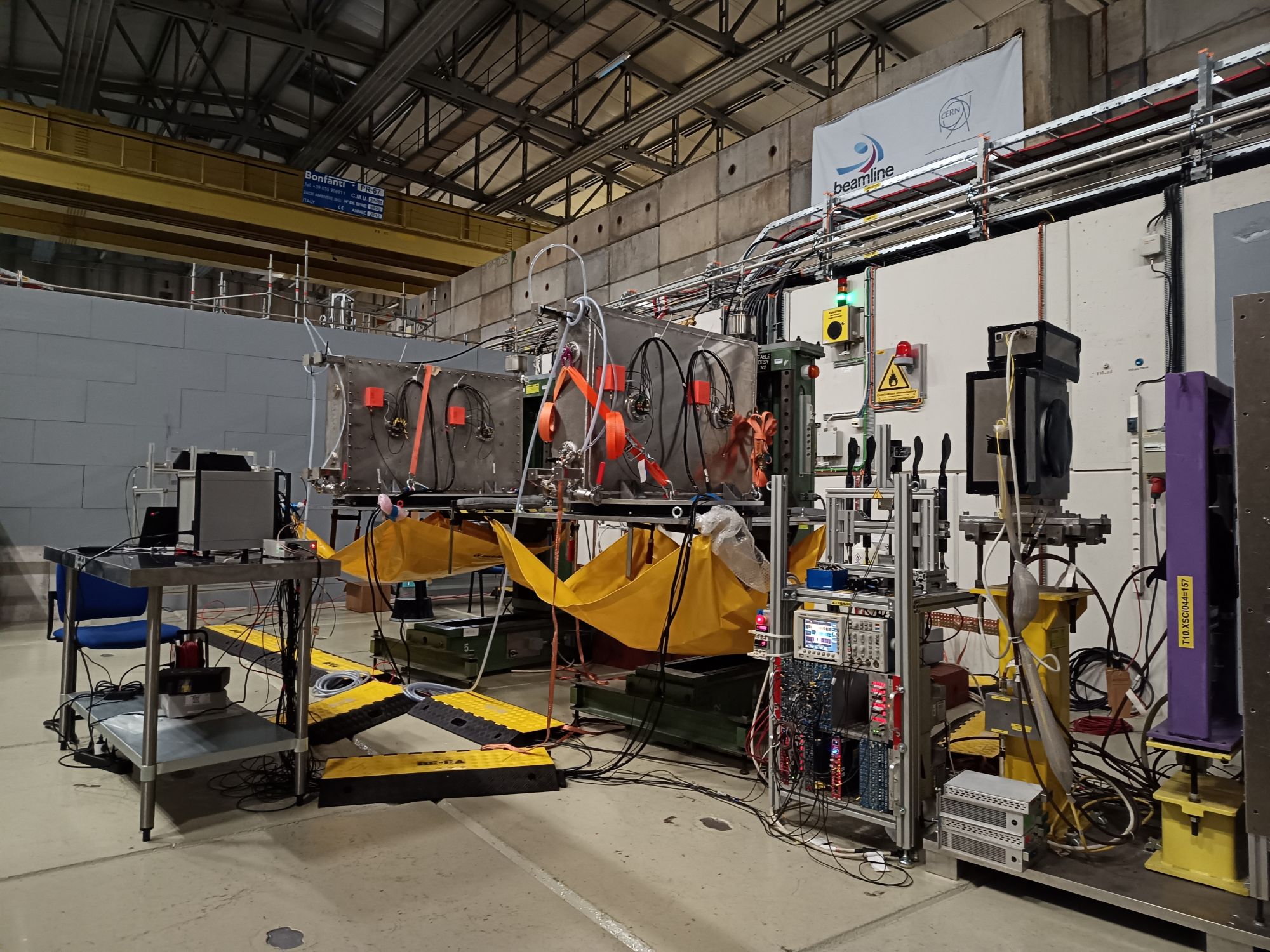 | 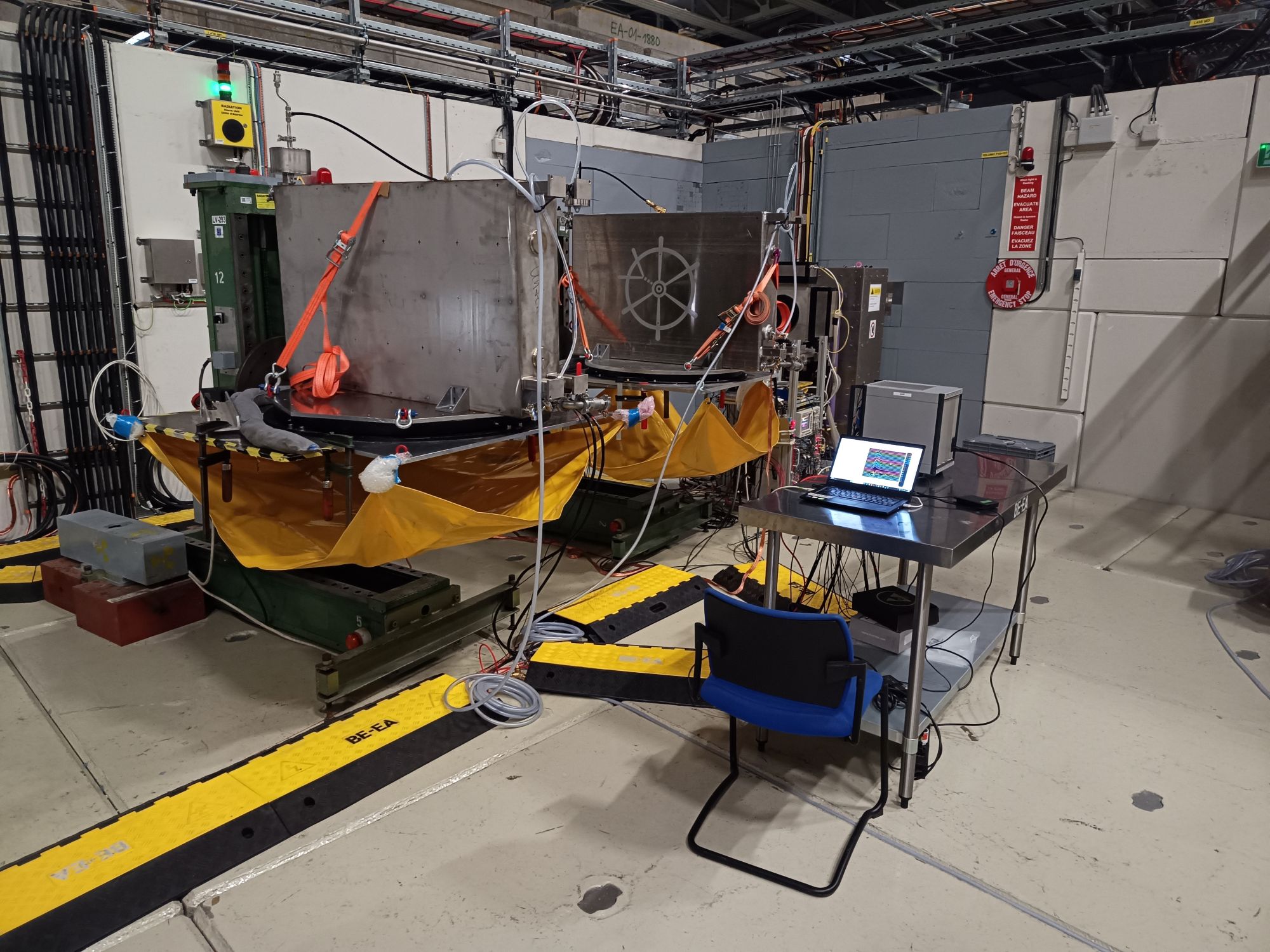 | 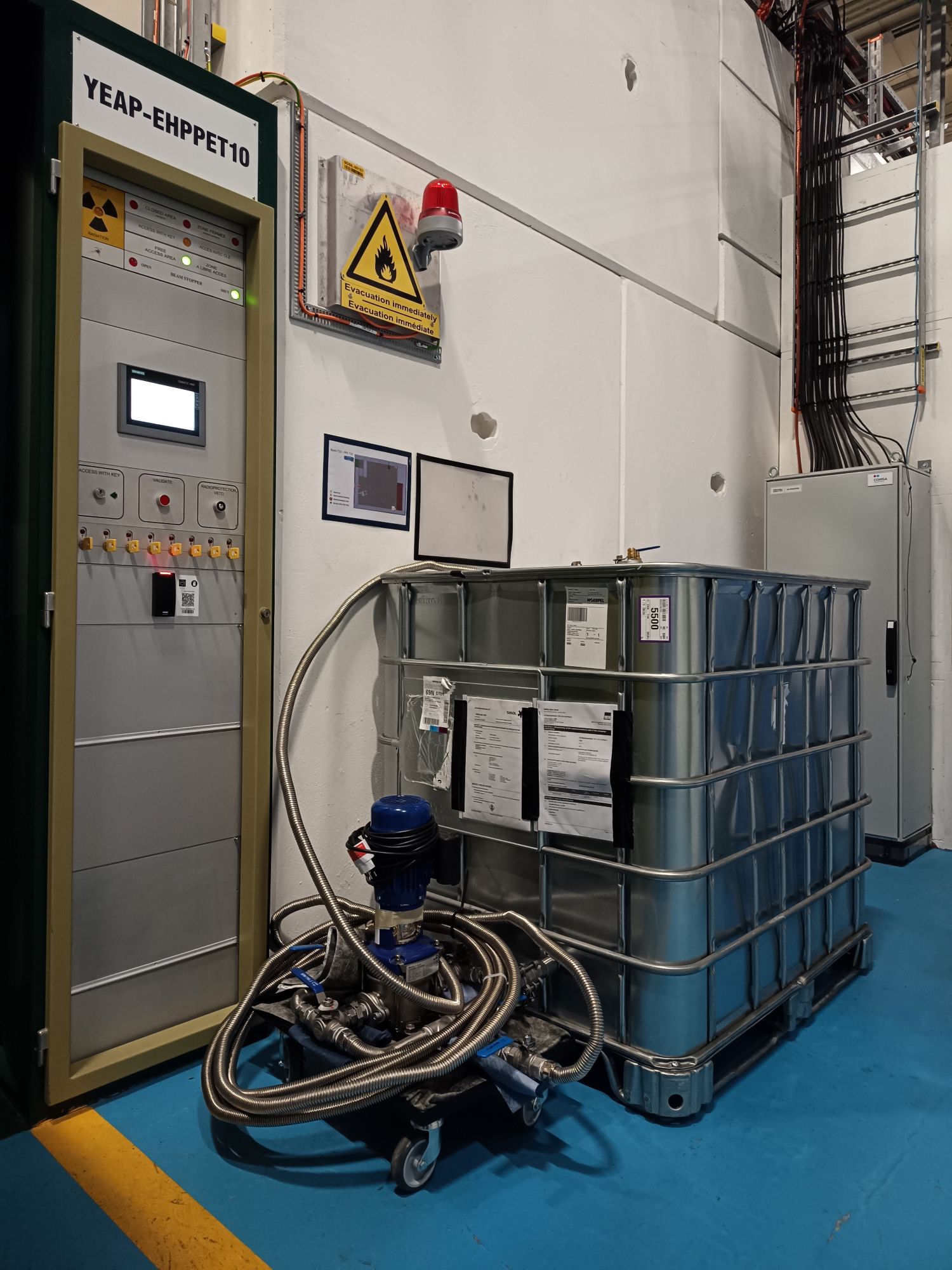 |
| -------- | -------- | -------- |
| 2-cell detector setup | First events @DAQ | LS IBC & LHS |
| 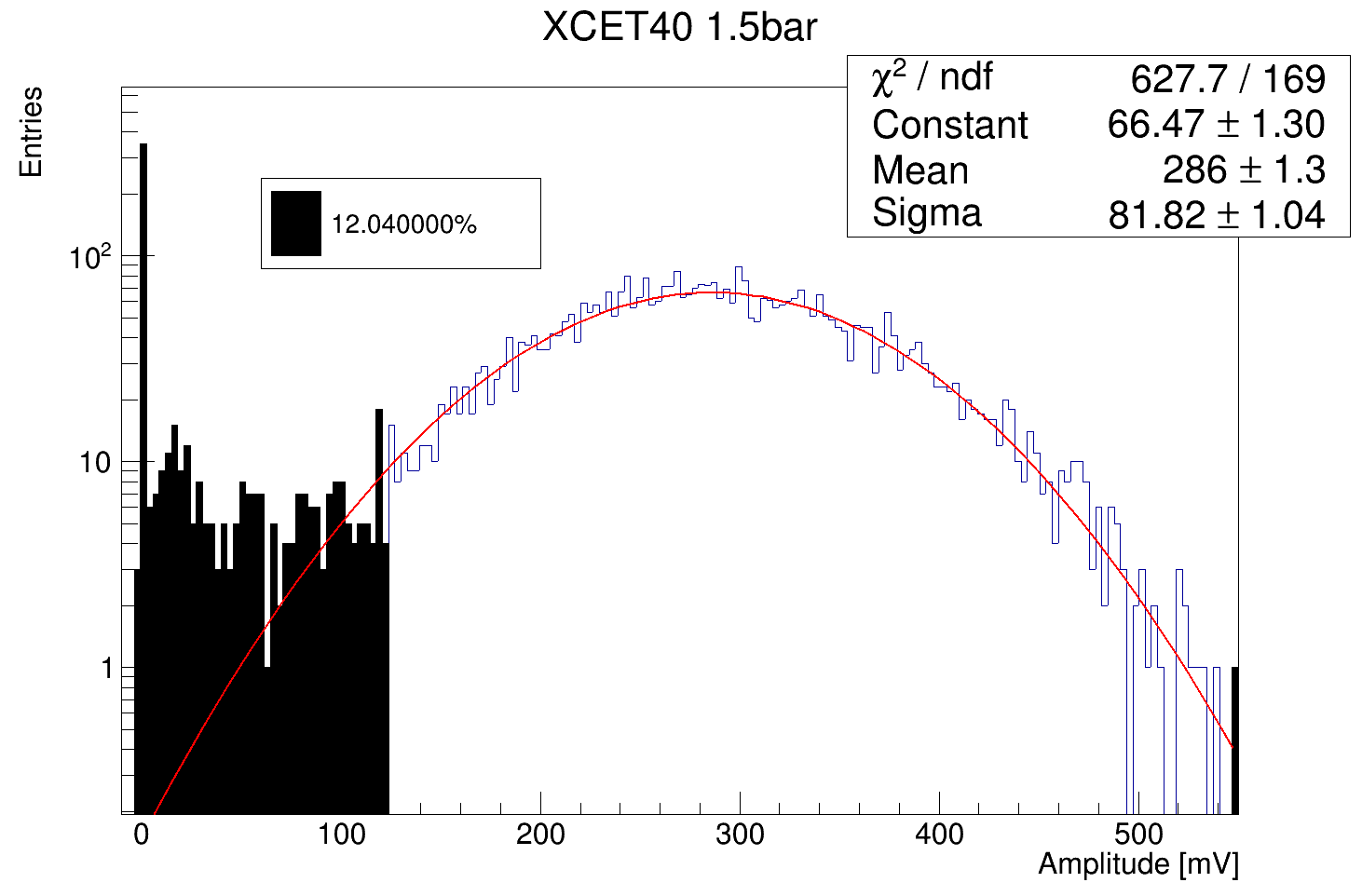 | 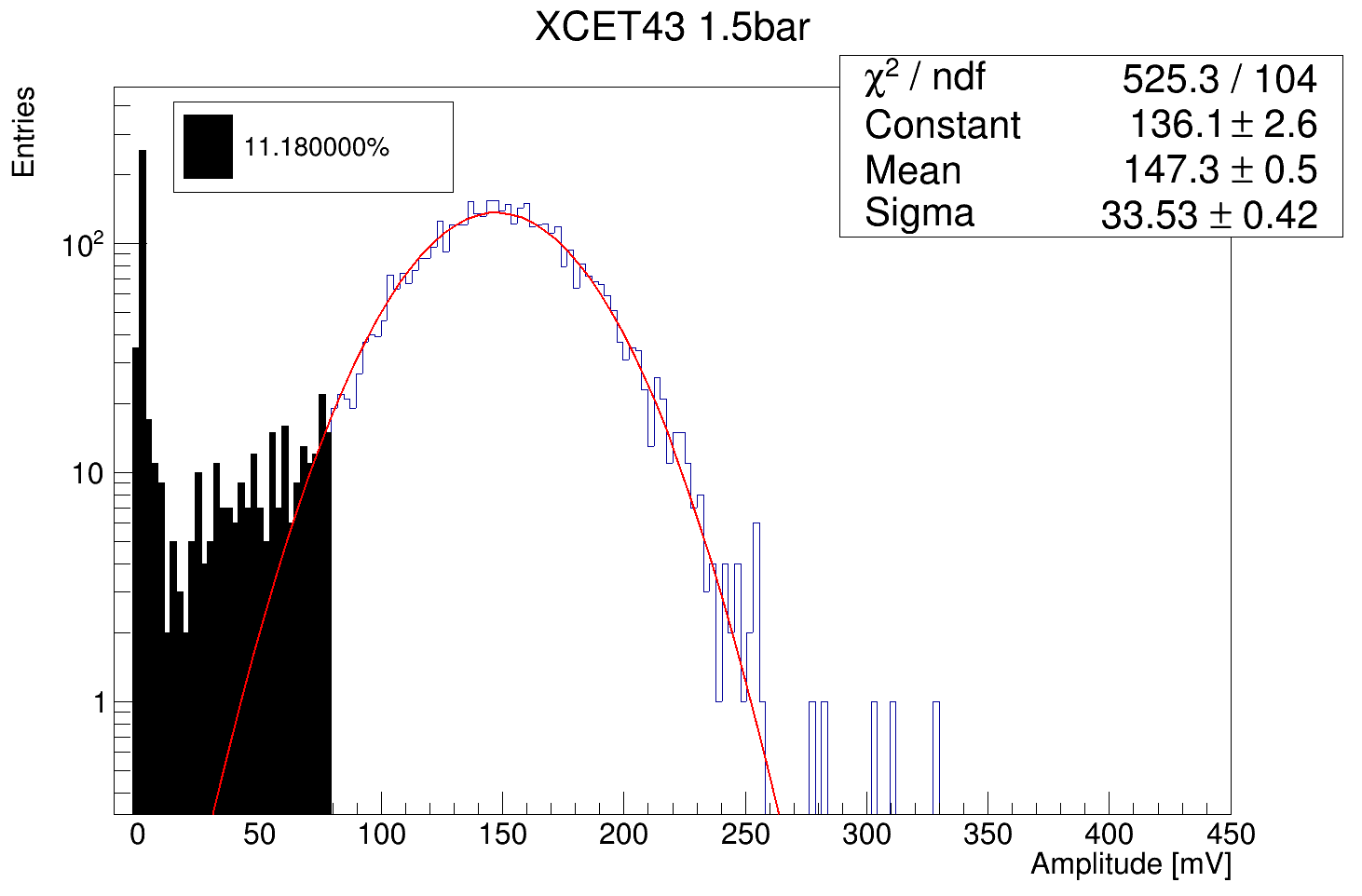
| -------- | -------- |
| XCET 43 | XCET 40 |
- Happily taking data with 5 GeV muons (m.i.p.) since last Friday 2025-05-09 (only 2 days delay):
- Main scan (x, y, rotation around y) of both detectors completed (data looking very good), now taking some extra measurements.
- Setting up new DAQ (SAMPIC) for testing on prototype cell A (end of this week).
- First tests with new readout electronics (FastIC) on prototype cell A (early next week).
- No need to extend beam period if the beam remains stable.
- Planning to clear out T10 on Wednesday 2025-05-21 (as originally scheduled).
| 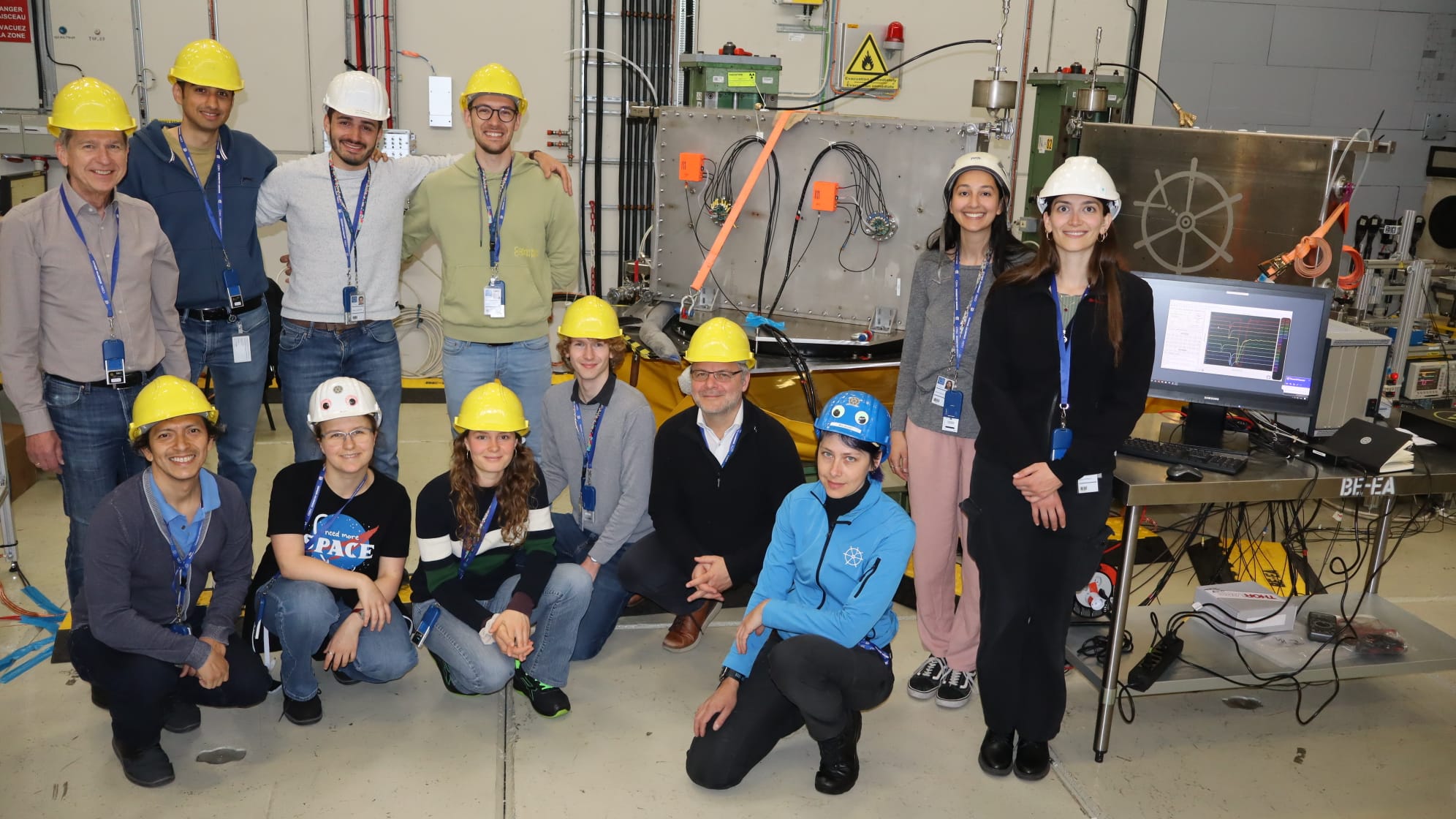 |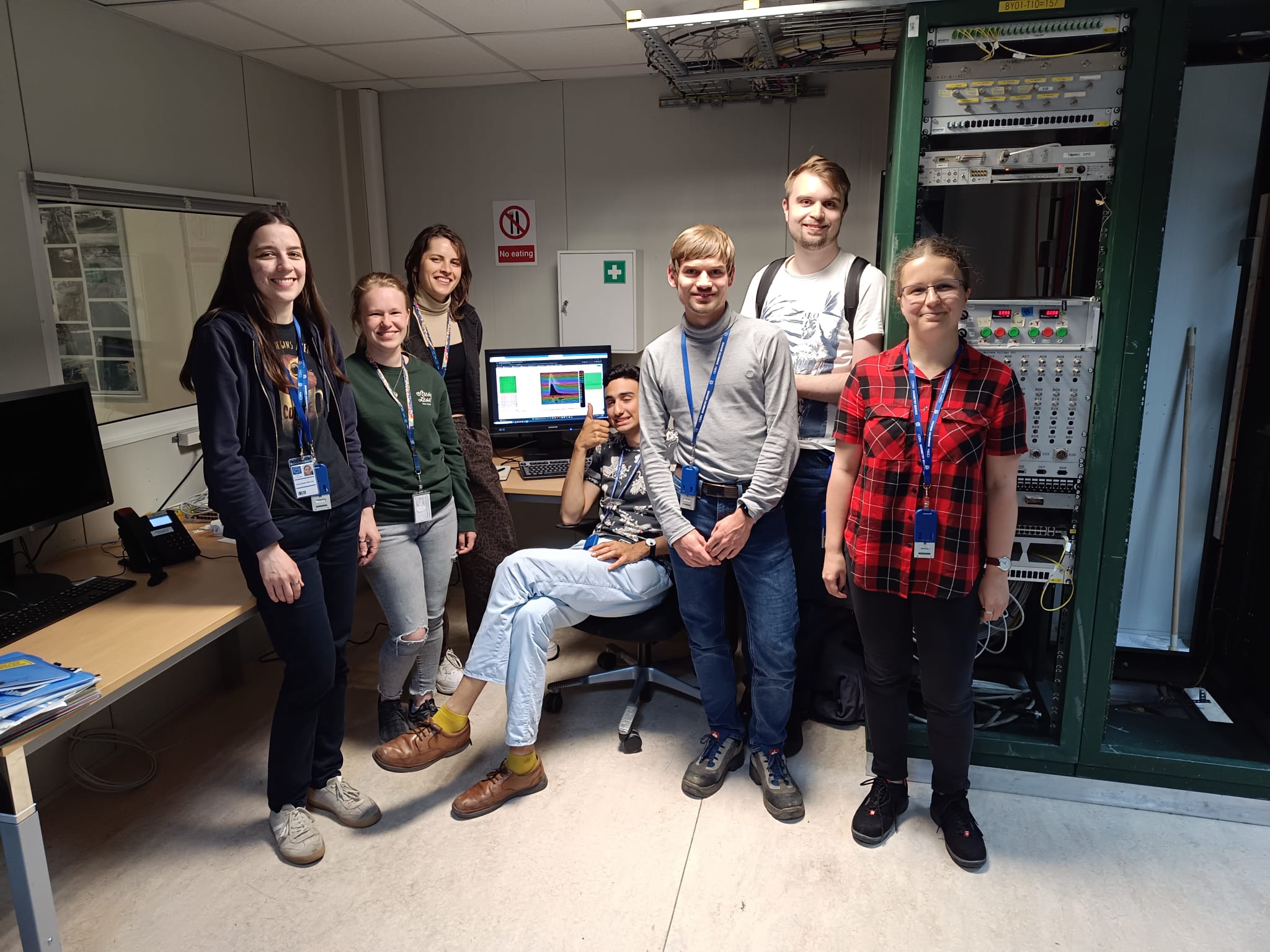 |
| -------- | -------- |
| Setup crew | Current shifters |
As always - thanks for your amazing support!
### T10 Incoming Main: POLAR-2/CXBe (Johannes Hulsman, Hancheng Li)
In Week 21, we plan to irradiate a GAGG-based spectrometer developed for the POLAR-2 and CXBe experiments at the T10 beamline. The goal is to characterize proton-induced activation effects relevant to the Low-Earth Orbit (LEO) space environment.
Detector Setup
- Dimensions: 60 × 60 × 120 mm³ (XYZ)
- Weight: ~1 kg
- Beam-facing surface: XY plane
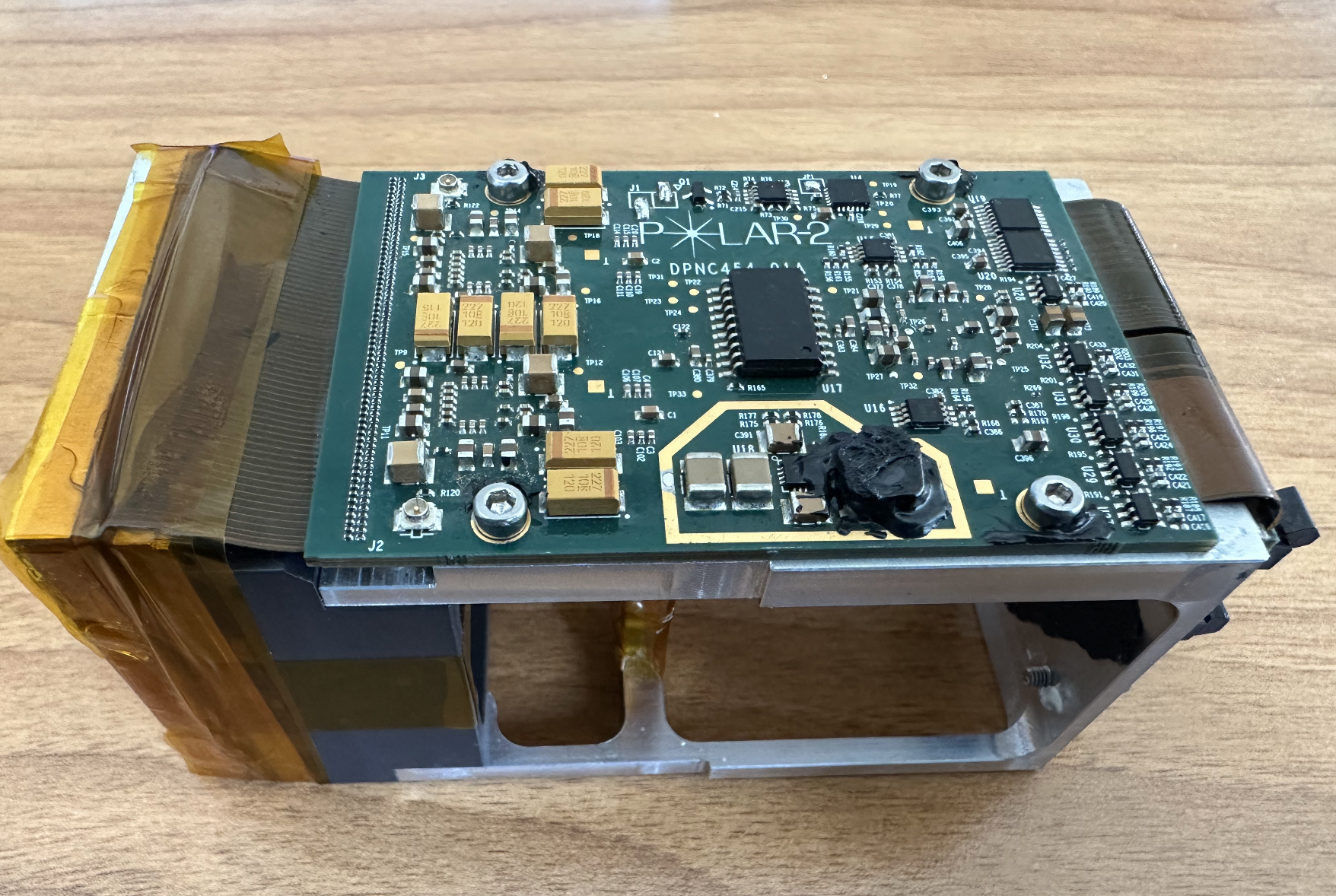
Beam Configuration Requirements
- Proton Beam
- Momentum range: 0.5 to 7 GeV/c, several monochromatic energy points (e.g., with 0.5 GeV/c intervals)
- Rate: kHz level
Beam Profile:
- Wide beam: 60 × 60 mm² to irradiate the entire detector plane
- Narrow beam: 6 × 6 mm² (optional), for central pixel irradiation
Beam Composition Monitoring:
- Information on flux and spatial distribution of beam components
- If available, we would like access to trigger and timing data from the Cherenkov and scintillator systems (e.g., timestamps, particle classifications) to correlate with our detector’s triggers
Onsite Equipment Requirements
- One XSCA table (40 × 40 cm², load capacity ~80 kg)
- Two regular work tables for PCs, power supplies, and auxiliary equipment
ISIEC form submitted (ID=1596).
## North Area Beam Status (Laurie Nevay)
On call phone number: **67500**.
T4 wobbling was changed for negative beams in H8 and H6 on Monday and restored to standard configuration yesterday afternoon.
H2/H4/H6/H8: Good operation. No issues to report.
M2: Different energy electron files and 160 GeV muon beam checked and tuned for MUonE. The XABS.X0610693 was stuck in OUT position on Wednesday but was quickly fixed by BE-CEM causing only a 30 minute downtime.
P42/K12: No issues. Request of NA62 to increase the K12 intensity from about 1.3e9 to 1.4e9 on XION1, which was adapted at the time of the wobbling change. Due to the more favaourable sharing, this corresponds to 36 units on T4.
## TT41 Main: AWAKE (M. Bergamaschi)
Last week, e-beam gun photocadothe replacement
This week good operations with proton beam, continuing with physics program
## TELMAX Main: PAX (G. Baptista)
PAX experiment for antiprotonic atom X-ray spectroscopy with a TES detector running smoothing since the start of physics on May 5th. We are acquiring a data set for Zr, and performing a series of systematic tests studying the detector response to background and incident beam intensity. Currently working on understanding pion background in the TES detector. 100 minibunches of ~1E5 antiprotons delivered from ELENA in a 10s spill seem to work well and we are running smoothly in parallel with normal bunch delivery to the other ELENA experiments.
This run should stop on May 19th. We will then assess whether we need to ask for more beamtime this year or not. Currently we are the only users in the zone.
## North Area Users Tour de Table
### H2 Main: LHCB_ECAL (L.Martinazzoli)
- Successful installation of the set-up
- Safety visit anticipated to yesterday at 11:00 in order to profit from the beam all day long
- Thanks to J.Devine for the flexibility!
- Beam files look good at a first check
- Measured electron resolution at 100 GeV: 1.5%, limited by our detector
- Main goal of the testbeam: completing measurements with the experiment electronics. Commissioning ongoing
Thanks to the beam experts and the infrastructure team for the support!
### H4 Main: NA64e (Vladimir Poliakov)
New beam file, thanks Nikos and Giovanni, was loaded and studied at May 8.
We had now significantly more narrow beam and less halo.
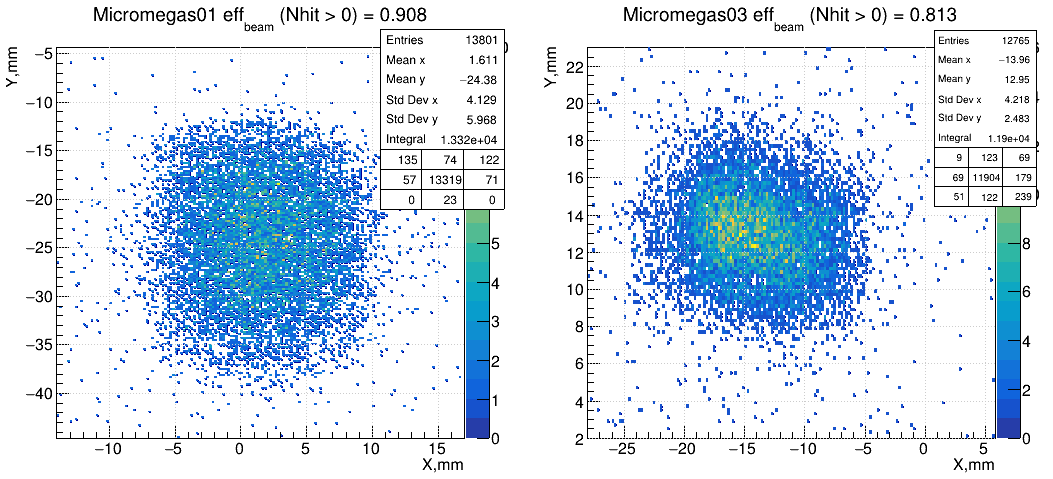
The halo rate was reduced 5 times, it was 5% in 2024 and 1% with new beam file.
Smooth data taking all week.
We started data taking with intensity 10^7 electrons per spill since yesterday.
We recorded around 30k spills and accumulated around 1.25x10^11 EoT.
### H6 Outgoing Main: CMS MTD ETL ETRO (Marcos Fernandez)
Three different activities during this period:
- LGAD sensor testing: installed "Torino" cold box in the AIDA telescope, to measure ETL LGAD prototypes (single pads) at -20C. Succesfull campaign with lots of data taken, we measured time resolution and collected charge of the sensors, confirming past results.
- ETL System Test integration: take over from sensor team on Sunday 11/5, using same setup (except a different telescope holding the ETL modules). Despite the few days of running, we tuned our setup and managed to record many events. We confirmed the results recently obtained at DESY with the latest version of the ETL modules + read-out board. The datataking setup is therefore fully tested and validated and will be used in the 3 test beam weeks we will have over the summer.
- Parasitic: ETROC. Setup a "suitcase setup" with 4 planes of hybrids (16x16 LGAD matrix with readout chip ETROC) on XSCA table behind the telescope. Testing of bump-bond stability of hybrids after thermal cycings. Setup commissioned, first measurements taken show no "delamination" effects. The excellent beam stability and rate enables to have a full sensor characterization in short time.
### H6 Outgoing Main: ATLAS_BCM_PRIME (Please insert your name)
### H6 Outgoing Main: ATLAS_ITK_PIXEL (Andre Rummler)
Measurement program with unirradiated FBK and SINTEF linear triplet successfully finished. Also for the 3D FBK ITkPixV2. Modules were removed yesterday and put into TREC as two of them need to go for irradiation in IRRAD next week. I left two reference modules for software tests with YARR. Official request for parasitic extension after thinext weekss meeting. Unfortunately I cannot join due to a conflicting meeting (our results from the test beam are just now presented).
### H6 Main: CMS MTD ETL ETROC (Marcos Fernandez)
Two activities running in parallel:
- Inside the telescope, integration of 2 ETROC modules inside EUDET telescope data taking framework. Testing of producers. Installation started yesterday after lunch, very good progress. Safety visit either today, latest tomorrow.
- Suitcase setup settled behind the telescope. Testing of thermal cycled detectors (-50 to 50 C) continues. Besides this "binary" measurements we would like to accomplish full detector characterization (time resolution vs high voltage),
We would like to ask for time beam extension in this parasitic location of H6B, from next wednesday till the end of the DRD3 test beam. DRD3 users will be inside the telescope, so space behind should be free. We will be in OFF state during CERF, unless operation is not damaging our sensors (can you comment on that?) and would use this added time for HV/timin resolution scans. Formally requested to SPS beam coordinators.
### H6 Incoming Main: CERF (T. Lorenzon)
- CERF is a unique field calibration facility in NA H6 for radiation protection instrumentation used at high-energy accelerators; **12 research groups** (9 external, 3 from CERN) have applied for beam time.
- CERF irradiation week dates: from WED 21/May/2025 to WED 28/May/2025
- PPE126
- Safety clearance obtained on 14/05/2025 (ID: 1597)
- All well on track, finalizing the last details
- Usual operations:
- CERF is managed with a tight time schedule: 24/7 8-hours irradiation slots, frequent beam stops.
- All H6 downstream experimental areas are interlocked during CERF beam time period.
- PLEASE DO NOT ACCESS areas downstream CERF WHEN the BEAM is OFF. If you need short access, please call R. Froeschl (160058), F. Pozzi (166258), T. Lorenzon (67965)
- Ready for beamtime!
### H8 Outgoing Main: SHIP CAL (Matei Climescu)
Just finished 2 weeks of running. Broad and sucessful program, many thanks to Maarten, Michael, Sylvain, James, Bastien and the entirety of the crane and forklift operators!
We ran over electrons from 3 GeV (!) to 288 GeV, muons + hadrons from 15 GeV to 300 GeV. Our detector is a PID detector (calorimeters) so we expect to precisely determine the beam purities for every setting given some time. We already have some preliminary results: for muon beam of 15, 30, 50, 240 and 300 GeV we find purities of ~35, 25, 35, 50 and 50%. Below are some copy pastes of our internal puirity tables:
#### Electrons
| E (GeV) | rate (kHz) | purity (%) ish |
|--------:|-----------:|------------------------|
| 3 | 0.09 | 60 |
| 5 | 0.25 | 60 |
| 10 | 0.9 | 80 |
| 20 | 1.3 | 70 maybe also less |
| 50 | 1.5 | 35 (assumed 70) |
| 100 | 1.3 | 35 (assumed 70) |
| 140 | 1.3 | 10 maybe also less |
| 286.3 | 1.4 | 30–50 |
| 240 | 1.4 | 30–50 |
#### Muons
| E (GeV) | rate (kHz) | purity (%) ish |
| -------:| ----------:| -------------------------------- |
| 15 | 0.05 | 35 |
| 20 | 0.08 | ? |
| 25 | 0.085 | ? |
| 30 | 0.085 | 25 |
| 50 | 0.14 | 35 |
| 100 | 1.5 | 90 |
| 110 | 1.5 | 90 |
| 140 | 1.4 | 90 |
| 160 | 0.6 | 90 |
| 180 | 1.5 | ? from beam monitor at least 50% |
| 300 | 1.4 | ~50% |
For hadrons more advanced PID is needed (so more analysis), we assumed ~40-50% pion content across the board. All those numbers are preliminary and only used for us to determine required trigger counts and run times. We will get better results once we have analysed the data.
### H8 Main: CMS PPS (F. García)
The setup has been installed with several different types of LGADs to be studied. the setup includes several planes with LGADs and a Triple GEM reference tracker.
The readout electronics for the LGADs is a home-made preamplifier and SAMPIC and for the tracker the VMM3a/SRS.
The safety inspection went smoothly, and the beam tuning was finished yesterday with several files, which can accommodate all our requirements. Therefore, many thanks to the Safety team and the beam physicist.
The plan is to continue with the alignment and then follow by a data taking.
The primary particles we are using now is pions with 180 GeV momenta and we expect that this type of particles we will use in the following days. The intensity is very good and hope to continue like this throughout the whole week.

We would like to request to get the remote control of the XSCA table in the Control room. Yesterday this was communicated to a colleague from the responsible team and it was understood that this will be done, but until now the control is still inside of the H8C area.
Many thanks to all the teams of the North Area for the prompt assistance.
### H8 Incoming Main: LHCB (L. Martinazzoli)
- Undertaken yesterday some interventions in PPE138 to partly re-install the dismantled TimePix telescope.
- Very useful day of operations
- Thanks to SHIP-CAL and CMS PPS for accomodating our intervention!
Next Wednesday:
Installation of the RICH setup and TimePix telescope to be concluded
- Beam configuration discussed with Maarten
- Size:
- most of the time, small beam, like in the past years, i.e. ~<5 mm sigma;
- some specific runs (a few hours) with large beam >= 1 cm for alignment.
- Rate:
- as high as allowed by the radiation safety/wobbling parameters.
### K12-P42 Main: NA62 (Michal Zamkovsky)
We are happy with the beam, just sometimes the intensity was a bit higher than we like.
It improved after the change of wobbling on T4, and subsequent steering on our beam line.
### M2 Main: MUONE (Aldo Arena)
We dedicated last weekend to continue the calibration of the calorimeter with 40 GeV electron beam. We asked Dipanwita the ossibility to have electron beams of different energy to further test the calibration and response of the ECAL.
Meanwhile, the installation is finished and the A/C is installed inside the tent.
We have some issue with strangely high relative humidity inside the tracking stations.
After some investigations, we found the culprint as the A/C inlet is situated directly on the first tracking station, that blows normal air inside the (not air tight) box of the detectors.
We still have the problem with the broken chiller. A few days ago a new one was bought and hopefully will arrive soon (maybe Monday).
On the tracker side, low intensity 160 GeV muon beam has been provided by Dipanwita. Noise and calibration scans are ongoing.
After a meeting with Amber representatives, it was agreed that MUonE will be the primary user of the M2 beam during the period from July 7th to July 31st 2025. From August 1st 2025, AMBER will become the primary user of the beam, with MUonE continuing its presence in the area during the period of commissioning for AMBER up to October 2025.
### H6 Outgoing Parasitic: CMS MTD ETL ETRO (Marcos Fernandez)
Please see H6 Main: CMS MTD ETL ETROC above
### H8 Parasitic: STRAW_TRACKER_RD (Please insert your name)
### M2 Parasitic: AMBER (Please insert your name)
---
## AoB
---
_Minutes by the respective speakers, edited by M. Jäkel, M. Malkin, and M. Schwinzerl_